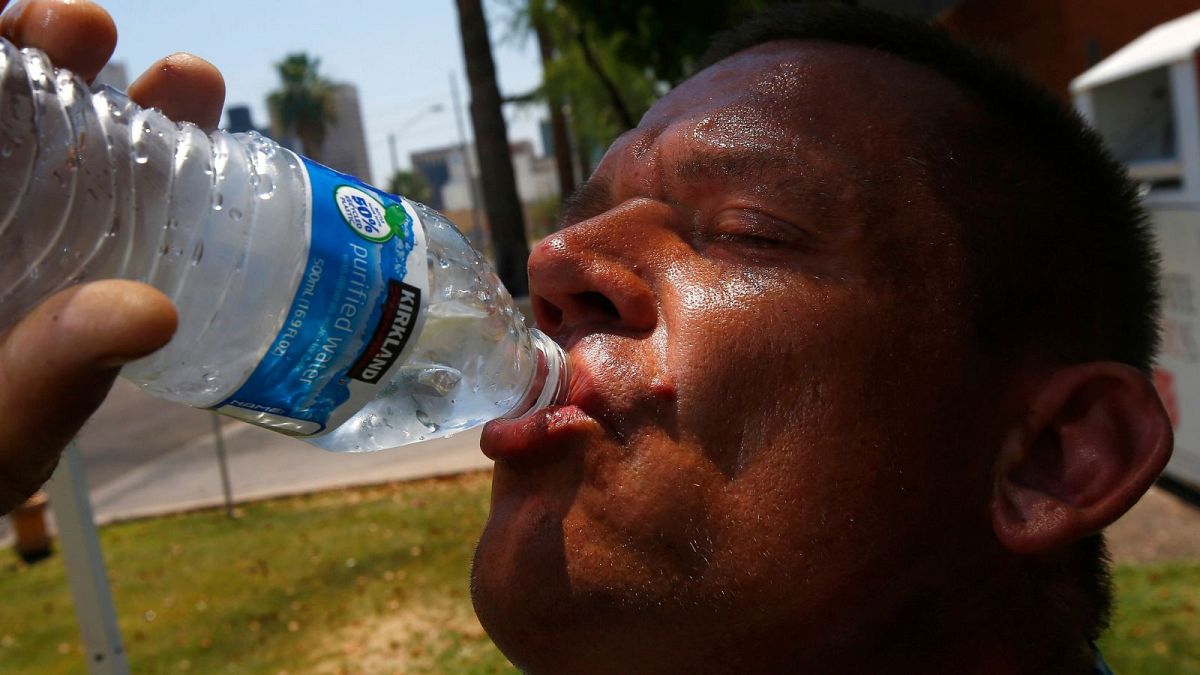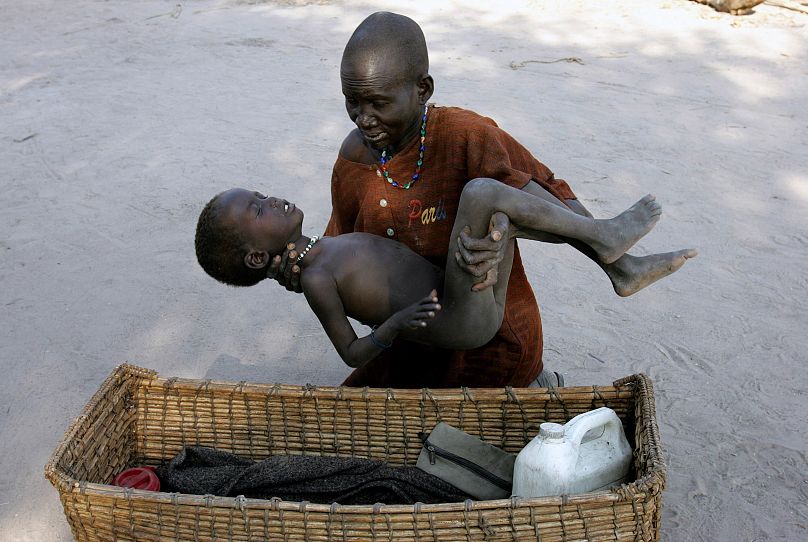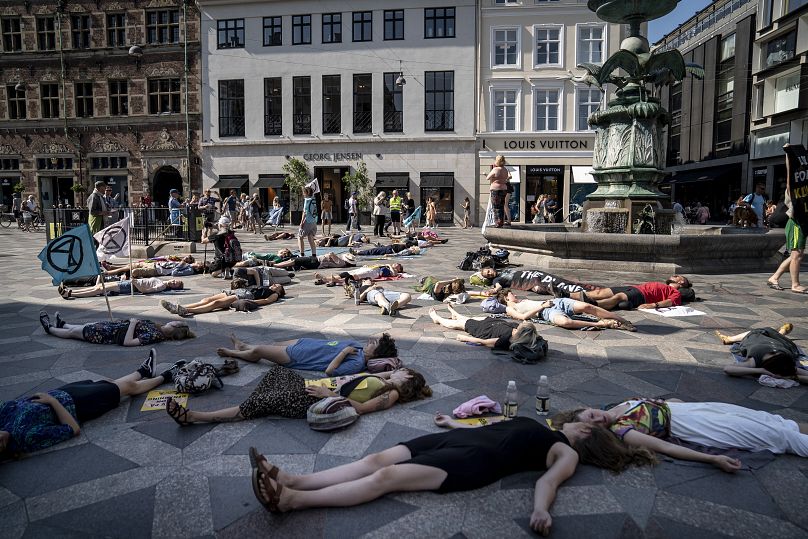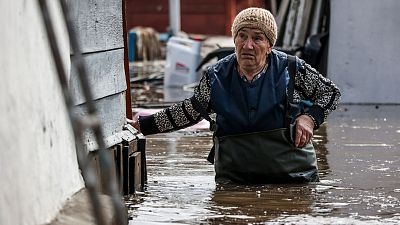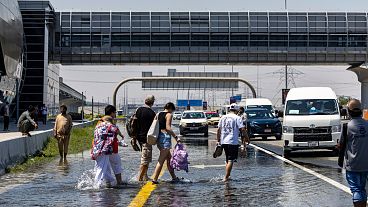Governments spent more than €8.2 trillion fighting COVID. But only €132 million of climate adaptation funds are spent on health annually.
In summer 2022, sweltering heat killed an estimated 61,672 people across Europe.
Most of those who died already had existing health issues like heart and lung disease. But their deaths were not inevitable: their breathing stopped and their hearts failed in searing temperatures made 160 times more likely by climate change.
It's possible to count the climate dead in this way because of attribution science, which measures the responsibility of climate change for a particular extreme weather event.
Estimating the cumulative death toll from climate change is much harder, but one expert calculates it's on track to pass 4 million in 2024 since 2000 - a total greater than the population of Berlin.
“Vanishingly few of these deaths will have been recognized by the victims’ families, or acknowledged by national governments, as the consequence of climate change,” writes US climate epidemiologist Colin Carlson, in a commentary in the journal Nature Medicine this week.
“More than half of those deaths will have been due to either malaria in sub-Saharan Africa, or malnutrition and diarrheal disease in south Asia, and most of the dead are therefore presumed to have been young children.”
Carlson, a global change biologist and assistant professor at Georgetown University, is calling for a wholesale shift in the way we think about and respond to the climate emergency.
How are climate deaths calculated?
The evidence that climate change has caused mass death on a “pandemic-like scale” is already shockingly clear, he says, but the science of climate epidemiology is still languishing.
“The first, and so far, only estimate of its kind,” claims Carlson, dates back to the early 2000s, when Australian epidemiologist Anthony McMichael developed a method to estimate mortality for certain climate risk factors.
These include floods, malnutrition, diarrhoea, malaria and cardiovascular disease, and the total number of deaths attributable to climate change came out as 166,000 a year. Taking that estimate forward, Carlson says that the climate crisis is annually killing nearly as many people as the population of Geneva.
4 million deaths by 2024 is well on the conservative side, since the McMichael method doesn’t include a number of other climate-related threats that experts have gained a more acute understanding of in recent years. Global heating has also caused excess mortality through famines, conflict, suicides, wildfires and dozens of chronic and infectious diseases like dengue fever.
How does the world’s response to the climate crisis compare to COVID?
Excluding the COVID-19 pandemic - which claimed seven million lives - climate change has exceeded the combined death toll of every World Health Organisation (WHO)-recognised public health emergency of international concern, Carlson notes.
But while the rising curves of COVID were closely watched on both a national and international scale, climate change is often described as a more generalised miasma we can’t hope to quantify in health and death terms.
Would treating climate as an analogous public health emergency help to cut through to the public and policymakers? Carlson certainly thinks so; and so do many others in the health and epidemiology space.
“If we’re not looking at the underlying cause, and we’re just treating the symptoms, we’re just going to keep falling further and further behind,” said Dr Kyle Merritt, the first doctor to put ‘climate change’ on a woman’s death certificate after an extreme heatwave in Canada in 2021.
The UN climate conference held its first ‘health day’ at COP28 in December, where more than 40 million health professionals demanded combined health and climate action.
But, writes Carlson, “No matter how many governments and international organisations pay lip service to climate change as a health emergency, their spending tells the real story.”
Global governments committed at least $9 trillion (€8.2 trillion) to fight COVID, he adds, but only $143 million (€132 million) of climate adaptation funds worldwide are spent on health each year.
How should governments be responding to the climate-as-health crisis?
Posting his commentary on X yesterday, Carlson said he wrote it “because I felt like I was the only one who had noticed.”
“Cutting greenhouse gasses isn’t enough anymore,” he added. “National governments have to meet the challenge of climate and health with substantive commitments: access to essential medicines; access to high-quality care; access to food and clean water.”
To advance the study of climate mortality, Carlson - who also runs an institute focused on predicting and preventing pandemics - thinks that predictive computer modelling is the way forward.
To that end, he told Grist magazine, he is planning to gather leading climate and health experts together this year, to figure out how to build a predictive system that can simulate disease spread and climate conditions.
As for WHO’s approach, the UN agency has been calling climate change and air pollution a global crisis for years. Between 2030 and 2050, it warns, climate change is expected to cause approximately 250,000 additional deaths per year from malnutrition, malaria, diarrhoea and heat stress alone.
However the terminology of Public Health Emergency of International Concern (PHEIC) is very technical and has certain criteria, such as acute, unusual occurrence and risk of global spread. Since the climate crisis has been ongoing for decades and is already a chronic global crisis, these technical descriptions do not apply, according to WHO.
The chronic global climate crisis demands a sustained, long-term approach for our health, which it says a PHEIC declaration was not designed for.
That doesn’t change the fact that we need to prepare health systems around the world to adapt and be more climate resilient and we need to reduce emissions dramatically, now.
